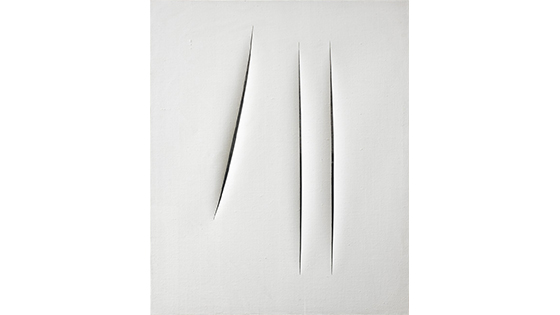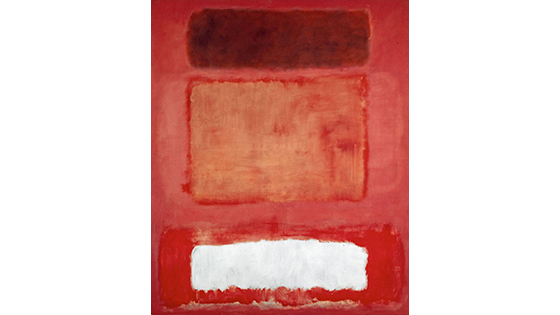Le forme schematiche di Schifano si andavano
sempre più precisando come campo;
le tele orlate da contorni rettangolari, ad angoli smussati,
somigliavano a uno schermo preparato a ricevere,
o ad un video appena acceso, che stia riscaldandosi;
o se si vuole all’inquadratura di un reflex fotografico,
che debba dettagliare una zona di veduta…
(M. Calvesi, cat. mostra Galleria Odyssia, Roma 1963)
La galleria Gió Marconi ha il piacere di presentare la mostra Mario Schifano. Qualcos’altro dedicata ad un nucleo di monocromi compresi tra il 1960 e il 1962, curata da Alberto Salvadori e in collaborazione con l’Archivio Mario Schifano.
L’artista comincia a realizzare questi smalti su carta intelata a partire dal 1959, dopo alcune esperienze informali.
Li presenta per la prima volta a Roma, alla galleria la Salita (1960), nella collettiva 5 pittori cui partecipano Giuseppe Uncini, Tano Festa, Francesco Lo Savio e Franco Angeli, e successivamente, in una personale alla Tartaruga (1961).
In anticipo rispetto ad altri protagonisti della scena romana, Schifano intende con i suoi monocromi non solo azzerare la superficie del quadro, anche come risposta all’informale, ma attribuirle un altro punto di vista, “inquadrarla”, proporre un nuovo modo di vedere e di fare pittura.
Il primo a capire che la superficie dei monocromi è semplicemente uno schermo sarà Maurizio Calvesi che così scrive nel catalogo della mostra alla Galleria Odyssia (1963): “Erano quadri originalissimi: verniciati con una sola tinta o due, a coprire l’intero rettangolo della superficie o due rettangoli accostati… Un numero o delle lettere (ma solo talvolta) isolati o marcati simmetricamente; qualche gobba della carta, qualche scolatura: il movimento della pittura era tutto lì.”
Comune denominatore di un’intera generazione di artisti da Lucio Fontana a Enrico Castellani, da Piero Manzoni a Yves Klein, il monocromo non è una novità tra la fine degli anni Cinquanta e l’inizio dei Sessanta e Schifano ne è perfettamente consapevole.
“Pensavo che dipingere significasse partire da qualcosa di assolutamente primario…”, racconta l’artista, “I primi quadri soltanto gialli con dentro niente, immagini vuote, non volevano dir nulla. Andavano di là, o di qua, di qualsiasi intenzione culturale. Volevano essere loro stessi… Fare un quadro giallo era fare un quadro giallo e basta”.
Azzeramento del gesto e del senso, dunque, un semplice pretesto per fare una pittura che riparta da zero, un incipit a qualcosa di diverso.
La grammatica dei monocromi di Schifano è molto semplice: smalti industriali dall’effetto lucido e coprente; colore “grondante” steso in maniera libera e non uniforme sulla ruvida superficie della carta da pacchi. L’intento è dare l’idea di una pittura da cartellone pubblicitario.
La superficie dei quadri, dai colori accesi e privi di sfumature, alla stregua di una lastra fotografica, prelude all’impressione di nuove immagini: è un nuovo spazio da indagare, un campo di germinazione che si dispone a produrre qualcos’altro.
L’emblematico titolo di questa mostra si riferisce a un’opera del 1960 che Schifano realizza appena ventiseienne e a un polittico del 1962 che figura tra le opere esposte.
Con efficace sinteticità da messaggio pubblicitario Qualcos’altro sta forse a indicare che ciò che l’artista intendeva dipingere doveva essere diverso da quanto si vedeva in giro; ma è anche un intento programmatico espresso in due parole: il monocromo, inteso come tabula rasa, è già pronto a trasformarsi in luogo di proiezione, campo fotografico in cui si metteranno a fuoco dettagli, particolari, frazioni di immagini.
Qualcos’altro ha un sapore quasi profetico, se si pensa che questi “schermi” si riempiranno presto dei nuovi segni della vita moderna. È alla luce di tutto questo che la mostra si concentra sui monocromi, a sessant’anni dalla loro nascita, in quanto tappa cruciale del cammino creativo di Mario Schifano e genesi della sua invenzione pittorica.
Alle opere verrà affiancato un nucleo di lavori su carta degli stessi anni e, per l’occasione, sarà pubblicato un giornale della mostra in formato tabloid con contenuti inediti dell’artista e un contributo di Riccardo Venturi e Alberto Salvadori.
ENG below














